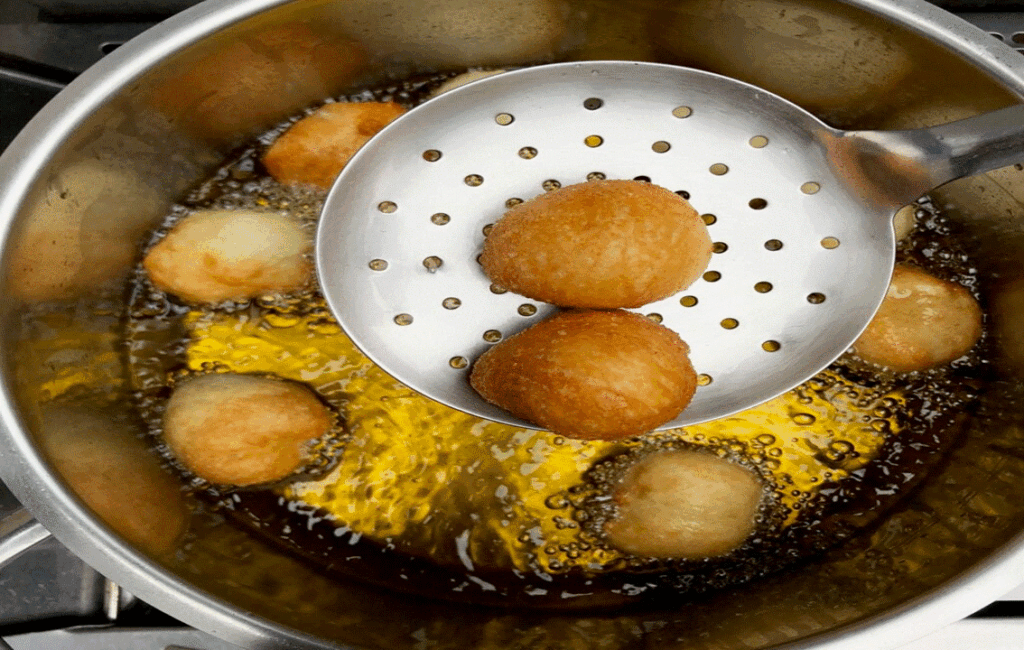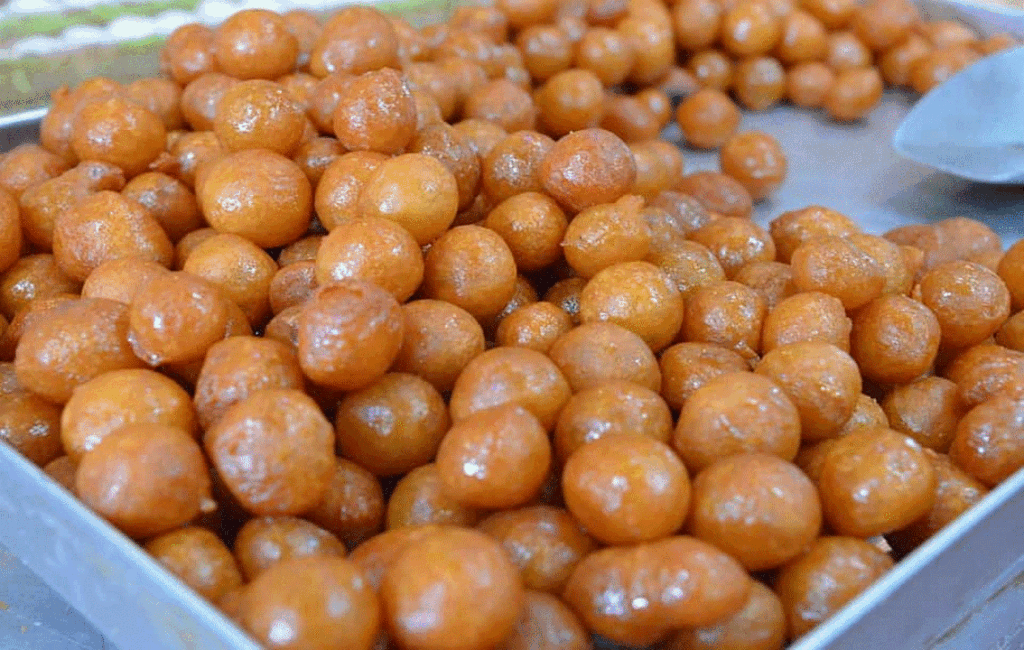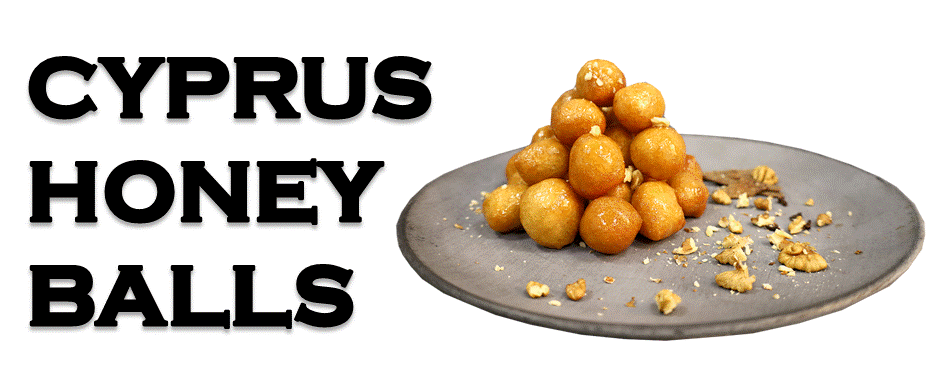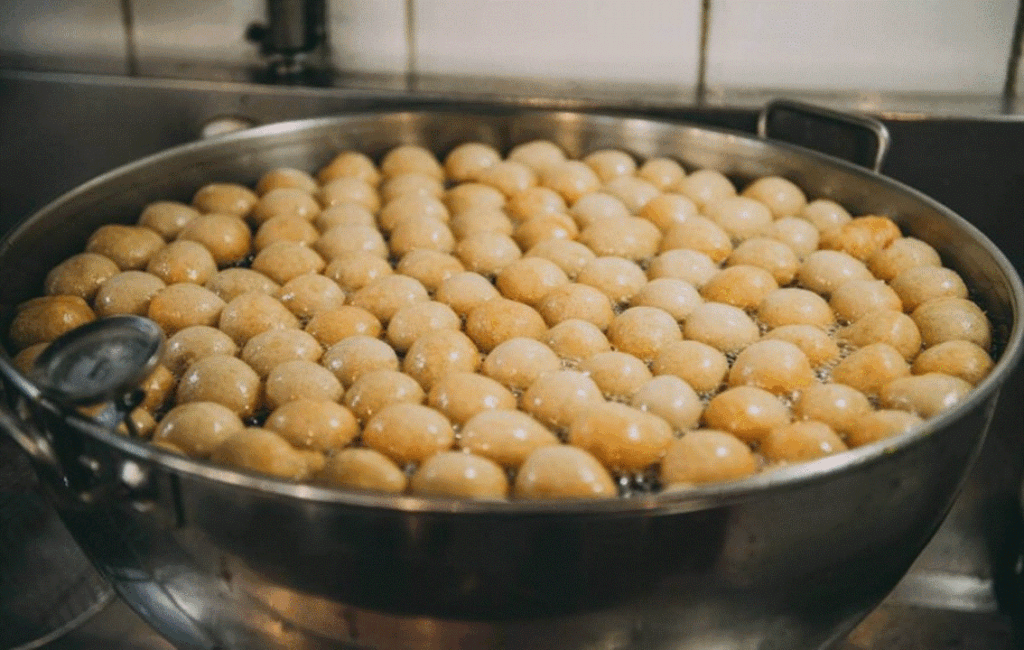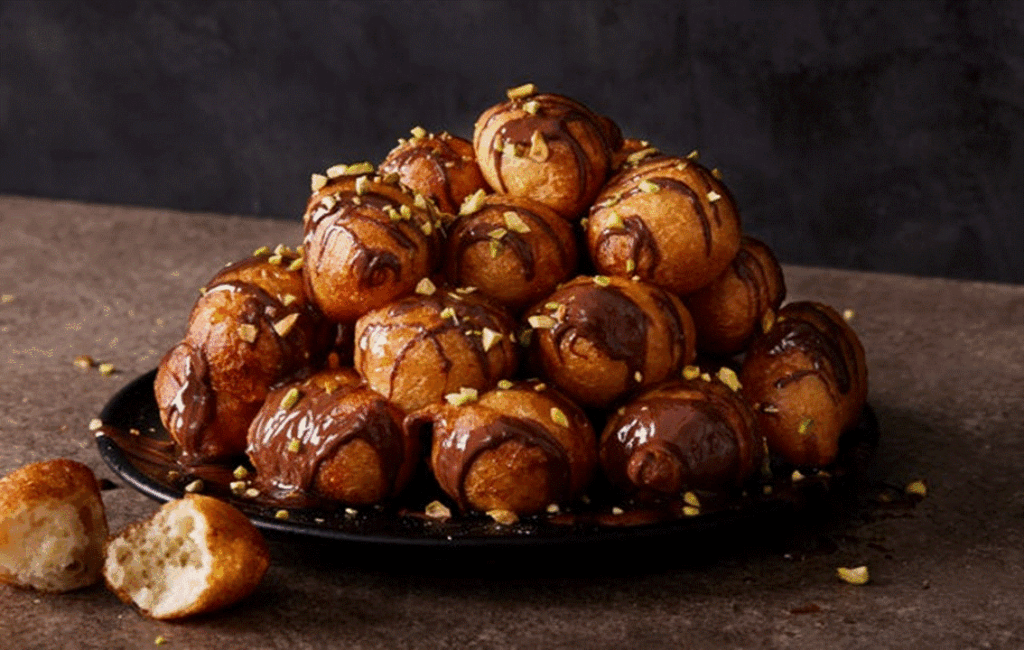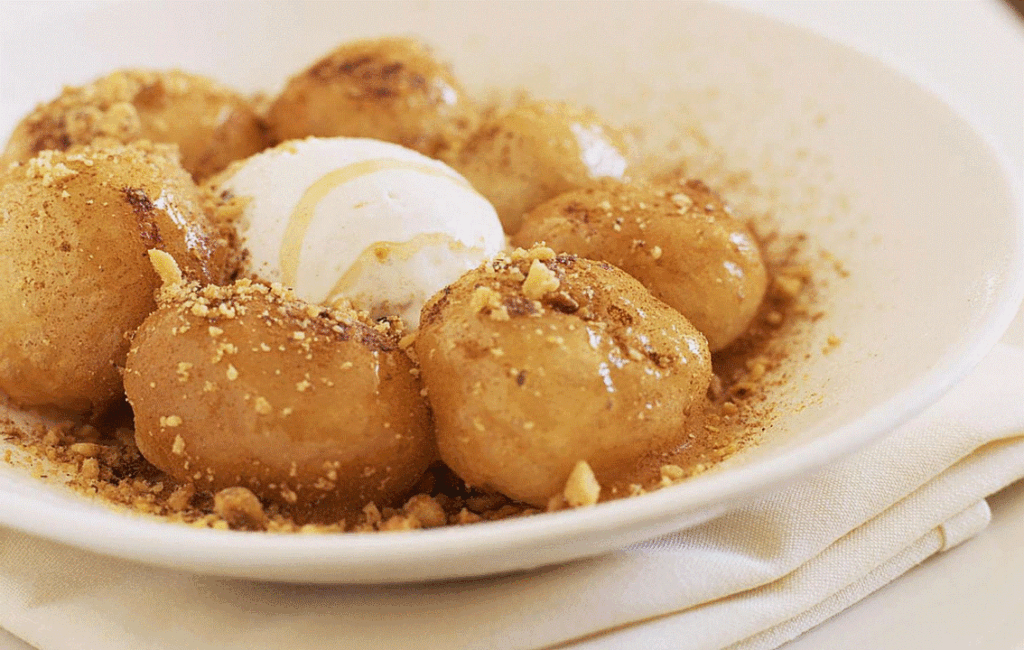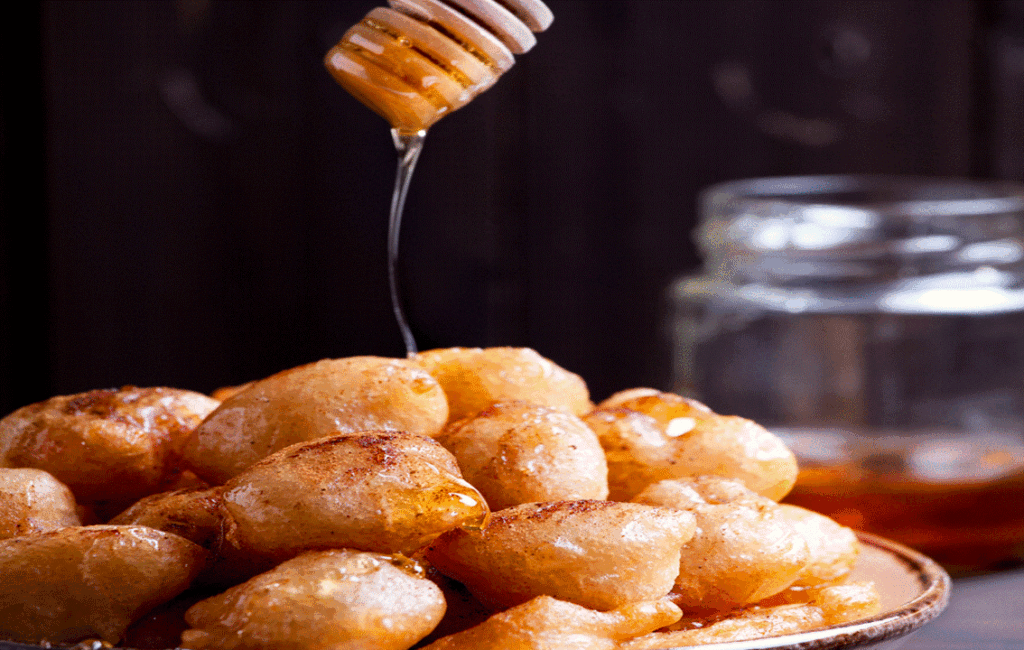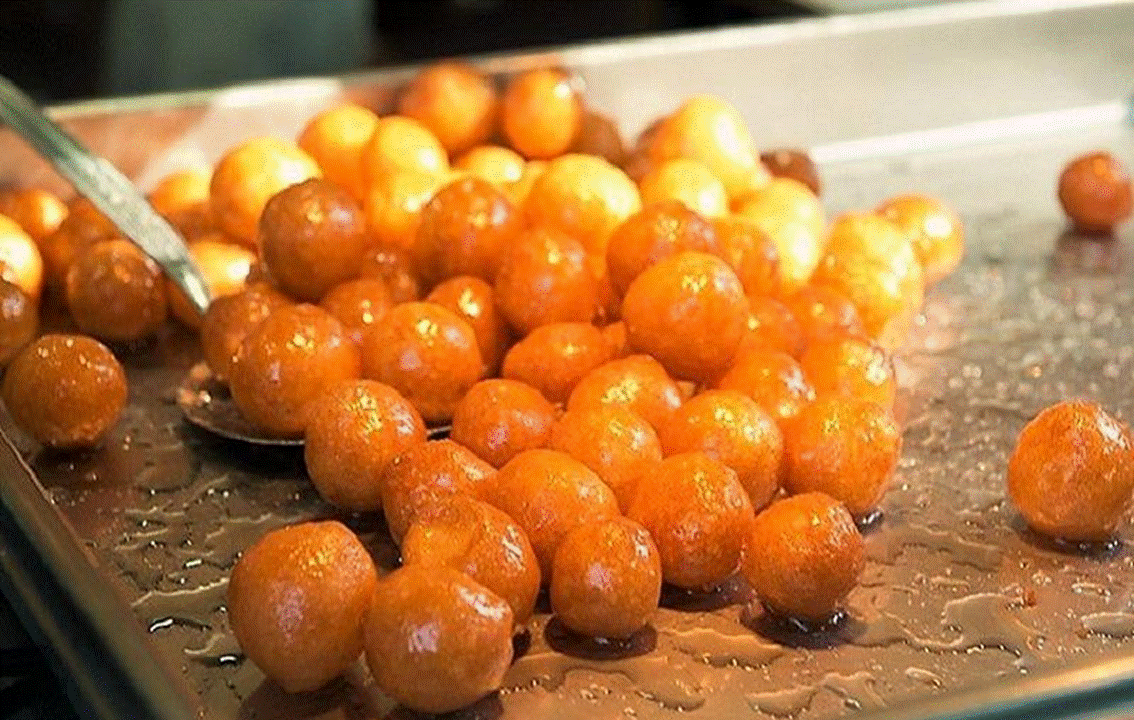Considered a symbol of prosperity and fertility in ancient Greek culture, the use of honey in traditional Greek recipes is particularly significant. As a result, early versions of the quintessential Greek delicacy, known as ‘Loukoumades’, or ‘Honey Balls’, were considered special. This was mainly due to their high honey content. This is because only the higher echelons of ancient Greek society had access to the honey that was needed to create the delicacy.
Often associated with the gods, particularly with the goddess Demeter, honey was a highly regarded, sought-after special ingredient. Honey balls emphasised the connection between food, culture, mythology, sport, and celebration in ancient Greece. The preparation of sweet dishes using honey also marked a ceremonial aspect of ancient Greek life. This often links culinary practices to religious and cultural festivities. The early versions of this delicacy resembled today’s honey balls, but with the addition of sprinkled sesame seeds that easily stuck to their thick honey coating.
The history of this delicacy is traced back to ancient times. References to the sweet delight found in works by ancient Greek poets, such as Athenaeus. He would often highlight the delicacy’s popularity in his writings. Another example of their reverence is the fact that they were considered a form of reward for athletes during the early Olympic Games.
The Byzantine era had a profound influence on the culinary practices of the greater Eastern Mediterranean and Cyprus. The introduction of new cooking techniques and ingredients during this period helped to shape several traditional dishes that we find in Cyprus today. This also helped to create the refined versions of today’s Cypriot honey ball. Byzantine cooks began experimenting with different flours, spices, and flavourings. All of this led to several variations of the original recipe. Notable changes were the use of aromatic spices, such as cinnamon and cardamom. This enhanced the flavour profile of honey balls, and the eventual use of syrup, often made from honey and sugar, further broadened their appeal. These innovations not only represented Byzantine gastronomy but also featured in the cultural exchanges that defined the Eastern Mediterranean region at the time.
The arrival of the Ottomans in Cyprus brought a wave of new culinary influences. This would further shape the evolution of the Cypriot honey ball. The Ottomans had a significant impact on the island’s food culture as a whole, and local Cypriot traditions were blended in with their own. As a result of this fusion, an Ottoman version of the Cypriot honey ball, known as ‘Lokma,’ emerged. This much resembles today’s version and is the preset of the delicacy’s current name. The term ‘Loukoumada’ later emerged when warm honey balls began to be sold by street vendors across the island. Street vendors went on to become a common sight at social gatherings, festivals, and street fairs. This helped transform the honey ball into a welcome treat. This helped it to become even more popular as a wider communal delicacy.
The story of these delightful honey-soaked dough balls is not merely one of a simple dessert. It is a reflection of a people’s history and their love for their culinary arts. The communal aspect of sharing honey balls with family and friends across Cyprus fosters a spirit of togetherness. This has helped make them a symbol of hospitality and joy within Cypriot culture. They also remain an integral part of the island’s culinary landscape, representing an essential part of Cypriot culture. Moreover, this Cypriot dessert serves as a marker of identity, bridging generations and fostering a sense of belonging.
Although the traditional recipe has been preserved, modern variations exist across Cyprus. Families often pass down their own unique versions of recipes, with each generation adding its own touch. This reinforces the connection between food and heritage. Catering to evolving modern tastes, honey balls today are often served with various toppings. These include chocolate, pistachios, or even ice cream. These adaptations reflect a growing trend towards fusion cuisine, where traditional dishes are reinterpreted with innovative twists while still maintaining their cultural essence.
Beginning in the Hellenistic period of ancient Greece, this delicacy has successfully travelled all the way to today’s era. The rich historical journey of the delicacy has overlapped several cultural traditions, culinary techniques, and community values. This is further emphasised by the fact that these sweet delights are still regularly served by street vendors today across the island. This particularly takes place during festivals and holidays, ensuring that their popularity on the island remains strong. With this in mind, it is fair to say that whether the delicacy is enjoyed at festive gatherings, family celebrations, or just as a simple yet delightful sweet treat, the Cyprus honey ball will continue to satisfy the palates of many. The delicacy today still honours the rich heritage from which it emerged from and the Cypriot honey ball also embodies the spirit of Cypriot culinary traditions. The Cypriot Honeyball remains a beloved dessert today, influenced by its modern adaptations.
